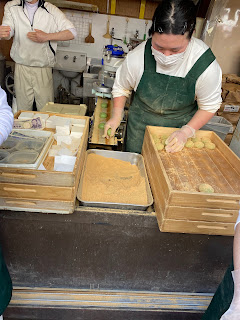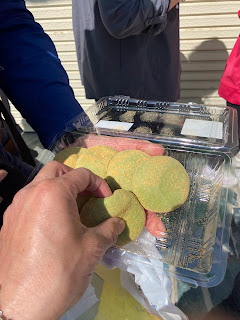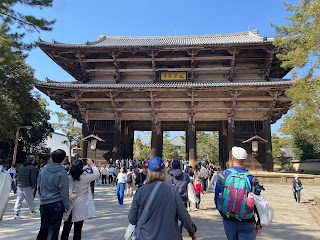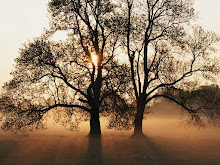After a very short night of sleep due to a bout of sickness with a few in our crew, we ventured out to visit Kiyomizudera Temple. To get there, we navigated city busses, which were quite busy.
Once we arrived at our stop, the approach to the temple was a street filled with an array of interesting shops (and opportunities for people watching!).
A few visitors opted to engaged in their visit fully by renting kimonos and getting their hair done—with flowers intertwined in their hair, they looked very beautiful!
Kiyiomizudera Temple (which means"Pure Water Temple”) is one of the most celebrated temples of Japan. It was founded in 780 on the site of the Otowa Waterfall in the wooded hills east of Kyoto and derives its name from the fall's waters. In 1994, the temple was added to the list of World Heritage Sites.
Kiyomizudera is best known for its wooden stage that juts out from its main hall, 13 meters above the hillside. The stage affords nice views of the numerous cherry and maple trees below, as well as of the city of Kyoto in the distance. The main hall, which together with the stage was built without the use of nails, houses the temple's primary object of worship, a small statue of the eleven faced, thousand armed Kannon.
After enjoying our visit to Kiyomizudera temple, we took a train to another smaller town not far from Kyoto called Nara. our experiences in Nara included the Todaji Temple and the Nara Deer Park.
Enroute to these sites, we indulged in the famous Nara mochi:
Todaiji (Tōdaiji, "Great Eastern Temple") is one of Japan's most famous and historically significant temples and a landmark ofNara. The temple was constructed in 752 as the head temple of all provincial Buddhist temples of Japan and grew so powerful that the capital was moved away from Nara in 784 in order to lower the temple's influence on government affairs.We enjoyed a very quick but informative English tour before setting off on our own to explore the temple grounds.
Until recently, Todaiji's main hall, the Daibutsuden (Big Buddha Hall), held the record as the world's largest wooden building, despite the fact that the present reconstruction of 1692 is only two thirds of the original temple hall's size. The massive building houses one of Japan's largest bronze statues of Buddha (Daibutsu). The 15 meters tall, seated Buddha represents Vairocana and is flanked by two Bodhisattvas.
In the Nara Deer Park, we were surrounded by deer quietly roaming around, in between and among the people. Considered the messengers of the gods, Nara's over 1000 deer have become a symbol of the city and have even been designated as a natural treasure. Deer crackers are for sale around the park, and some deer have learned to bow to visitors to ask to be fed.
After a big day of walking and visiting temples, an ice cream treat does wonders to perk up the spirit and energy level of the group:
As does a long train ride which affords the opportunity to watch shows and give the parents a little quiet time:


































































